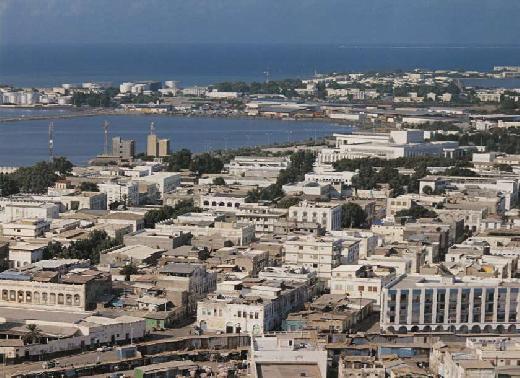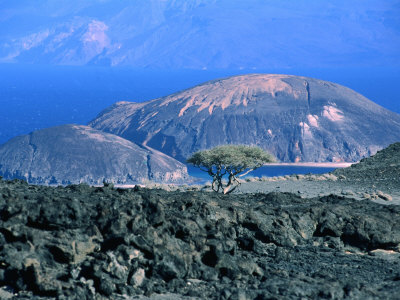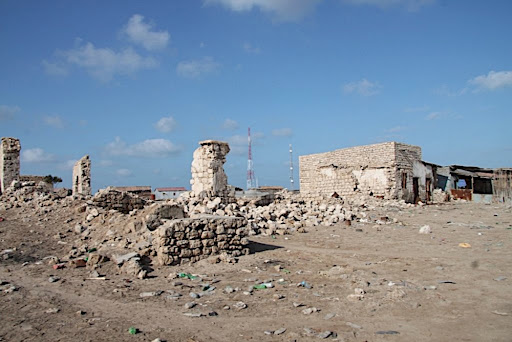PeopleDjibouti's population is separated in mainly two different groups: Afars in the north and the Somali-speaking Issas in the south. The population of Djibouti is estimated to be around 650,000 people.
About two thirds of Djibouti people live in the city. Those who do not live in Djibouti city tend to be nomadic and are occupied as herders of livestock. Djiboutians are warm, friendly and very hospitable, especially if you venture out into the countryside. It is not unusual if you are asked to stay for an evening meal if you visit a Djiboutian in the evening. |
Djibouti is one of the smallest countries in the world, located in the northeastern part of Africa by the Gulf of Aden, and shares a border with Ethiopia, Eritrea, and Somalia. Djibouti is a study in extreme contrasts; from rugged desert terrain to scattered plateaus and highlands. The stark beauty of the arid landscape is balanced by a coastal area with a unique ecosystem and a profusion of marine life, resulting from the mix of the Red Sea and the Indian Ocean. As a result of this rich marine life the country is well known for its amazing scuba diving, fishing, and water activities. There are many adventure options in Djibouti including hiking and windsurfing, but if relaxation and rejuvenation is what you seek, then the pale sand beach in the Gulf of Tadjoura is a good place to start. |
Geography
Djibouti has a semiarid climate that is hot and dry. It is extremely arid between June and August when the dusty Khamsin wind blows from the desert. Between October and April it is slightly cooler with occasional light rain; however, there is generally less than six inches of rainfall annually.
A stretch of mountains divides the country into two geographical regions of coastal plain and plateaus. The lowest point in the country is Lac Assal, 108 feet below sea level, and the highest peak is Moussa Ali (6,653 feet). Djibouti has no forestland and only a small percentage of the country is green meadow.
A stretch of mountains divides the country into two geographical regions of coastal plain and plateaus. The lowest point in the country is Lac Assal, 108 feet below sea level, and the highest peak is Moussa Ali (6,653 feet). Djibouti has no forestland and only a small percentage of the country is green meadow.
HistoryDjibouti has a rich oral history that predates the advent of the European settlers who colonized the country. The Issas and the Afars who were nomadic herders populated this area. In the early nineteenth century, France decided to establish its colonial foothold in the area and the place was later named French Somaliland.
The name was later changed to reflect the interests of both major tribal groups and became known as the Territory of the Afars and the Issas. Finally, in 1975, the French began to accommodate increasingly strident demands for independence. Independence was officially established on 27 June 1977, when the country became the Republic of Djibouti. Djibouti may be small, but through its history of political and tribal tensions, it has learned the art of compromise and it is a sterling example to its neighbors in Eastern Africa. |
Famous Attraction
Djibouti is divided into one city and five regions, so there are a wide variety of things to see and do, especially if you are a nature lover. In Djibouti city there are a number of places for sightseeing and shopping, including the Central Market, Aquarium Tropical de Djibouti, Khor Ambado Beach, and the soft sandy beaches are ideal for picnics and snorkeling.
Another must-see is Lake Abbe, one of a chain of six connected lakes in Africa. Lake Abbe is well known for its high limestone chimneys. The sunrise is glorious there and the local pink flamingos are a point of interest for those interested in the breathtaking local fauna.
Lake Assal, which is surrounded by mountains, offers a panoramic view and a great place to swim and bird watch.
In the Tadjoura region, the Gulf of Tadjoura is a point of interest, especially if you come between February and April to see the whale sharks.
Another must-see is Lake Abbe, one of a chain of six connected lakes in Africa. Lake Abbe is well known for its high limestone chimneys. The sunrise is glorious there and the local pink flamingos are a point of interest for those interested in the breathtaking local fauna.
Lake Assal, which is surrounded by mountains, offers a panoramic view and a great place to swim and bird watch.
In the Tadjoura region, the Gulf of Tadjoura is a point of interest, especially if you come between February and April to see the whale sharks.
NightlifeDjibouti is known for its low crime rate and considered safe in the evenings. There are many elegantly decorated bars in Djibouti where you can go to experience some good music and a relaxing time. Some bars feature live, traditional music. If bars are not your style and you want something more upbeat, there are also several nightclubs in Djibouti. If you are more interested in culture, there are dramatic performances in the capital, where Djiboutians showcase their acting and singing talents. Additionally, for nature lovers, the lunar landscape is hauntingly beautiful in Djibouti at certain times of the year.
|
Culture
Islamic beliefs are deeply rooted in Afar and Somali society and daily life is oriented to the Islamic cycle of religious rituals and holidays. Other religions represented are Christianity and Bahai. The only Djibouti Holiday that falls in the category of a non-Muslim holiday is Christmas, which is celebrated with great ceremony.
Djibouti's official language is French, used in education and administration. However the main indigenous languages are Afar and Issa-Somali, both of which belong to the Cushitic language group.
Djibouti's official language is French, used in education and administration. However the main indigenous languages are Afar and Issa-Somali, both of which belong to the Cushitic language group.
CuisineDjibouti serves up mouth-watering delicious foods some of which are endemic to the country. They cater to the international palate by serving some staples such as burgers and fries, but if you want to taste the traditional fare you can have those dishes too.
The local food of Djibouti is highly influenced by the French and Arab culinary art forms so you can expect some new and inventive combinations. Asian cuisine is also found in some restaurants, along with simple fast foods in certain restaurants. Common foods in the country include fresh seafood, lentils, and meat. A classic Djibouti dish is Soupe Djiboutienne, also known as Fah-Fah. It is a rich dish with meat and vegetables. Another classic is Yetakelt Wet, which is a spicy mixed vegetable stew. Berbere Sauce, Nitter Kebbeh and Banana Fritters are other dishes you may want to try. |
Qunar







